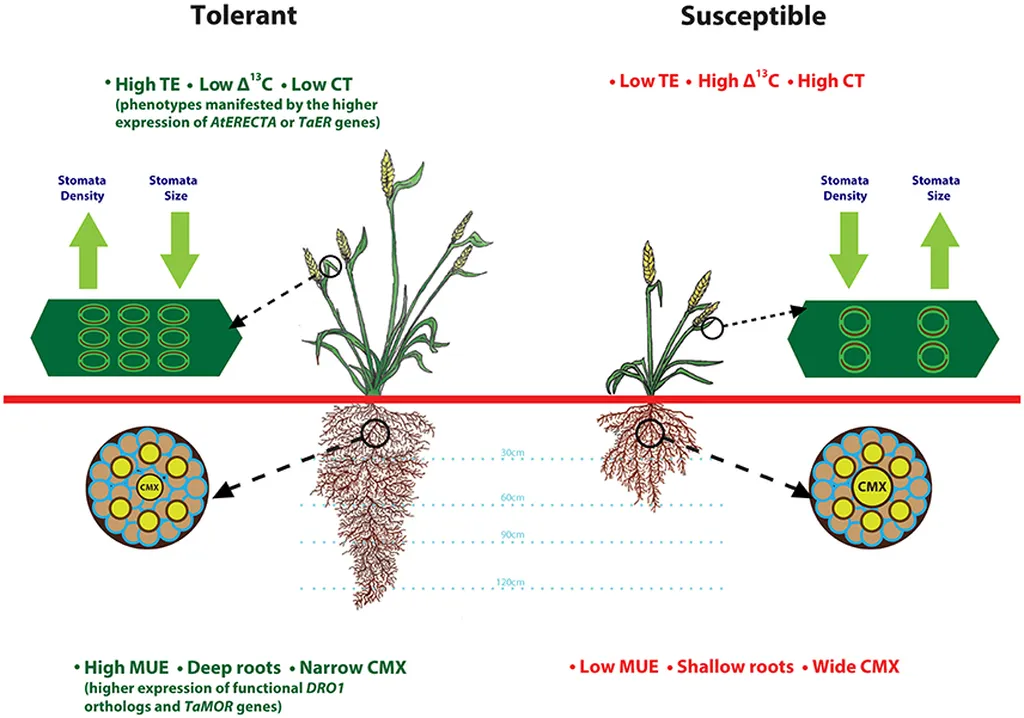In the face of climate change, researchers are racing to develop crops that can withstand the increasing pressures of drought and temperature fluctuations. A recent study published in the Journal of Plant Breeding Research (پژوهشنامه اصلاح گیاهان زراعی) has shed light on the key traits that influence grain yield in bread wheat under rainfed conditions, offering valuable insights for the agricultural sector.
Led by Ramin Sadegh Ghol Moghadam from the Department of Plant Genetics and Production Engineering at the University of Zanjan, the research evaluated 24 lines and cultivars of bread wheat to determine which traits contribute most to grain yield under dry conditions. The study, conducted over the agricultural year 2017-2018, measured a wide range of agro-morphological traits, including days to booting, days to heading, days to anthesis, days to physiological maturity, relative leaf water content (RWC), canopy temperature difference, plant height, spike length, peduncle length, peduncle extrusion, number of spike per m2, spikelets per spike, number of grain per spike, thousand kernel weight, grain yield, biomass, and harvest index.
The results revealed significant variability among genotypes for most traits, with the Hashtrood variety emerging as the highest yielder. Notably, the study found that the number of seeds per spike had a high and significant positive correlation with grain yield, while spike length showed a negative correlation. “Genotypes with a short spike length but with a higher number of spikes per square meter and a higher number of seeds per square meter showed a higher grain yield,” explained Sadegh Ghol Moghadam. This finding suggests that breeders should focus on these traits to develop wheat varieties that can thrive in water-limited environments.
The research also employed multivariate statistical analyses, including correlation analysis, regression analysis, and principal component analysis (PCA). The stepwise regression analysis identified four key variables—the number of seeds per spike, the number of spikes per square meter, thousand kernel weight, and spike length—that accounted for 93.8% of grain yield changes. The PCA further highlighted the importance of the number of seeds per spike, grain yield, and harvest index, which were positively related to the second component.
The implications of this research are significant for the agricultural sector, particularly in arid and semi-arid regions where water scarcity is a major challenge. By understanding the traits that contribute to grain yield under drought conditions, breeders can develop new wheat cultivars that are more resilient to climate change. This not only ensures food security but also has economic benefits for farmers and the broader agricultural industry.
As climate change continues to impact global agriculture, the need for drought-tolerant crops has never been more urgent. This study provides a crucial step forward in the development of wheat varieties that can withstand the pressures of a changing climate, offering hope for a more sustainable and secure food future.

